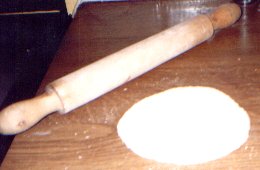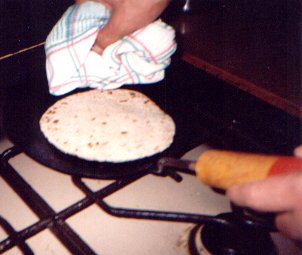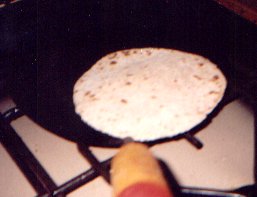Recipe Roti
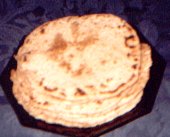
These Indian breads are quite easy to make once you get the hang of it. They are ideal because they are filling, versatile and can be eaten cold the next day as a portable snack. They should be light, soft and flaky. If yours turn out heavy and a bit leathery you probably did not cook it on a high enough heat as happened to me the first time that I made them. The authentic way to cook them is on a Tawa a sort of cast iron flat pan. If you cannot get hold of one use a heavy frying pan but the only problem you will have is turning the roti over because of the sides of the pan. You may have to use a fork to do this. Probably a griddle pan will work just as well. Always cook the roti dry , to add fat to the pan will fry it and make it like a board.
Ingredients:
250gms of plain brown flour,
organic is best of course.
1/4 teaspoon salt
1 desert spoon of oil (any)
1/2-1 cup filtered water
Method:
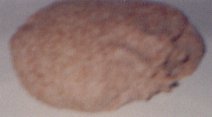
Put the flour into a very large bowl, add the salt then the oil and mix in by hand. Hold your hand over the flour mixture and pour water into the cupped palm. Mix this into the flour. Repeat 3 times more until the mixture has formed a large ball and is a similar consistency to pastry. I need to add about 5 handfuls of water because my hands are small. Press the dough out in the bowl with your knuckles at this stage it will be approx. about 2cms thick and have moon craters on it formed from the indentation of your knuckles. Sprinkle another handful of water over to moisten the surface and leave for about 5/10 minutes. This would be a good point to start heating up the pan. Heat it dry on full heat, you can turn it down slightly once the first roti has cooked. Gather into a ball again, knead with the knuckles for about 1/2 a minute then put on one side of the dish.
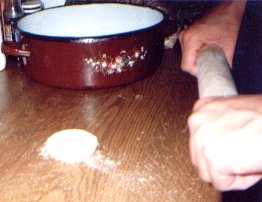
Put about 2 tablespoons of flour on the other side of the dish. Pinch off a small ball of dough, about tangerine size, dip it in the flour then roll and flatten between your palms. Dip this small dough cake again in the flour then place on a floured work surface.
